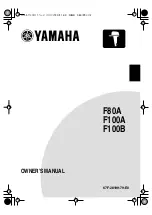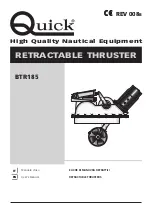
58
Super X11DPT-L User's Manual
3.4 Frequently Asked Questions
Question: What type of memory does my motherboard support?
Answer:
The X11DPT-L motherboard supports up to 2TB of 3DS Load Reduced DIMM (3DS
LRDIMM), 3DS Registered DIMM (3DS RDIMM), or up to 1TB of Load Registered DIMM
(LRDIMM), with speeds of 2933*/2666/2400/2133/1866/1600/1333 MHz modules in eight
memory slots. See
for details on Memory Support and Installation.
Notes:
1.
Support for 2933MHz memory is dependent on the CPU SKU.
2.
The memory
capacity support will differ according to the processor SKUs.
Question: Why can't I turn off the power using the momentary power on/off switch?
Answer:
The instant power off function is controlled in BIOS by the Power Button Mode
setting. When the On/Off feature is enabled, the motherboard will have instant off capabilities
as long as the BIOS has control of the system. When the Standby or Suspend feature is
enabled or when the BIOS is not in control such as during memory count (the first screen
that appears when the system is turned on), the momentary on/off switch must be held for
more than four seconds to shut down the system. This feature is required to implement the
ACPI features on the motherboard.
Question: How do I update my BIOS?
Answer:
It is recommended that you do not upgrade your BIOS if you are not experiencing
any problems with your system. Updated BIOS files are located on our website at
www.supermicro.com/ResourceApps/BIOS_IPMI_Intel.html
. Please check our BIOS warning
message and the information on how to update your BIOS on our website. Select your
motherboard model and download the BIOS file to your computer. Also, check the current
BIOS revision to make sure that it is newer than your BIOS before downloading. Please refer
to the following section for the instructions on how to update your BIOS under UEFI Shell.
Note
: The SPI BIOS chip used on this motherboard cannot be removed. Send your
motherboard back to our RMA Department at Supermicro for repair. For BIOS Recovery
instructions, please refer to the AMI BIOS Recovery Instructions posted at















































